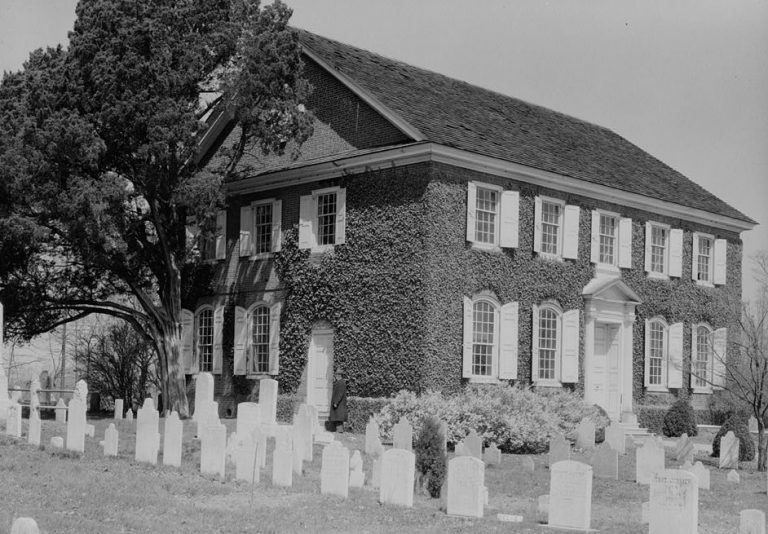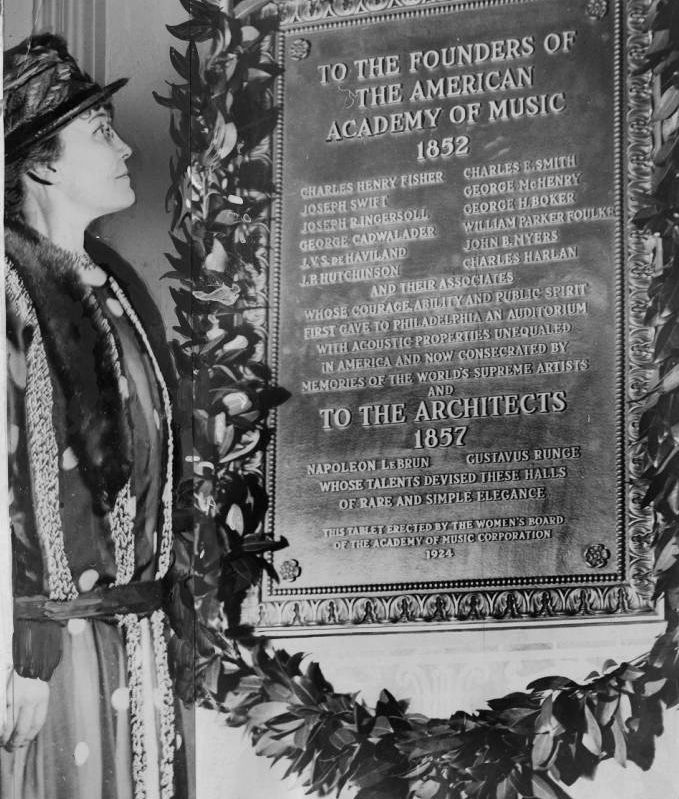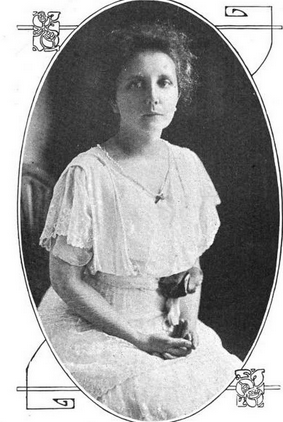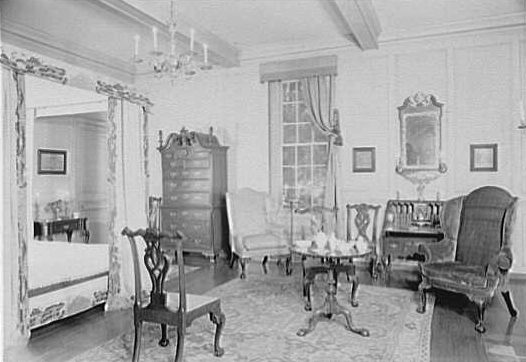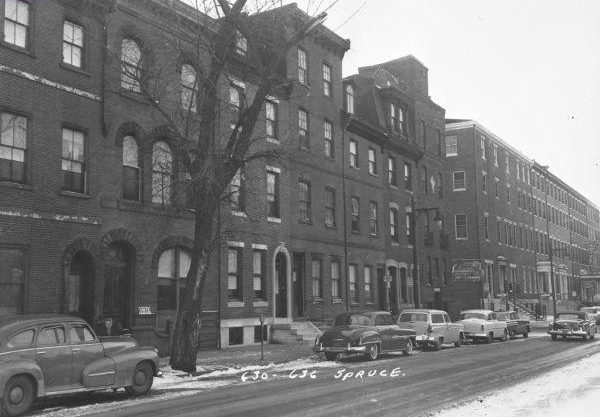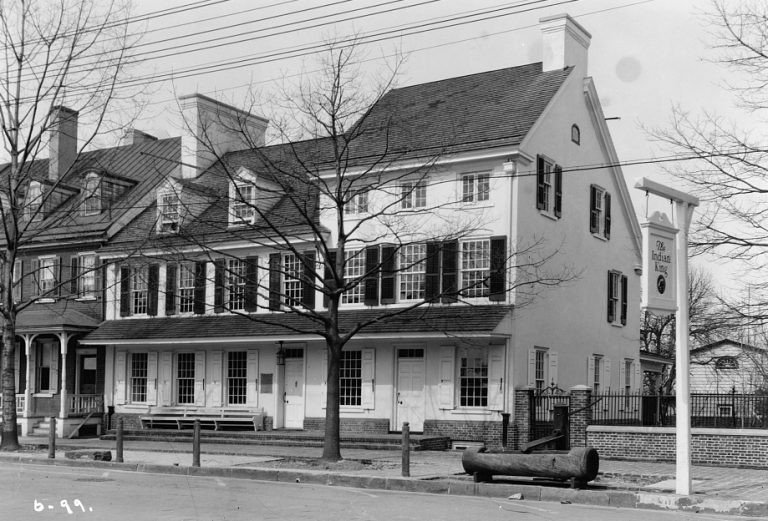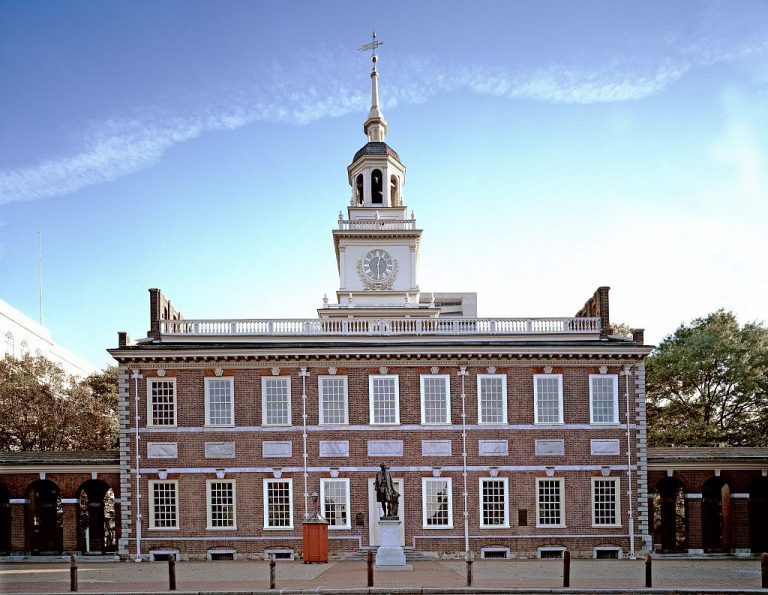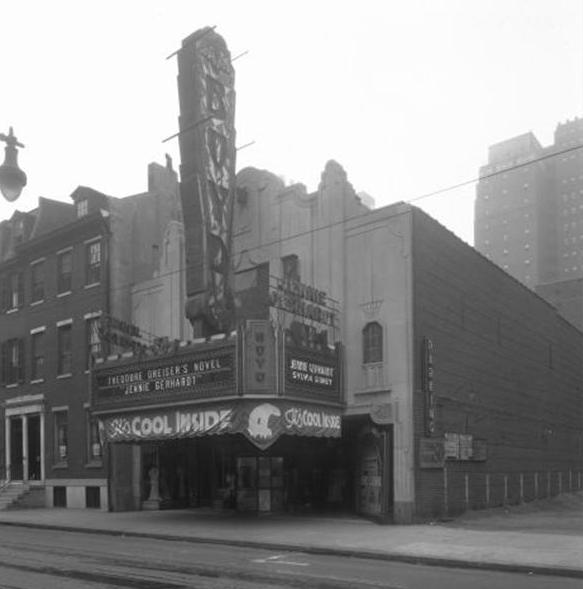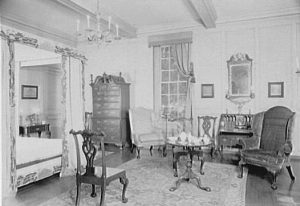Historic Preservation
By Charlene Mires | Reader-Nominated Topic
Essay
Through more than three centuries of building and rebuilding settlements, towns, and cities, the region centered on Philadelphia and spanning southeastern Pennsylvania, South Jersey, and northern Delaware became a living museum of American architectural history. The fate of structures ranging from log cabins and colonial mansions to courthouses, warehouses, and the famed Independence Hall often depended on changing economic circumstances in communities or happenstances of care or neglect by property owners. However, through the nineteenth and twentieth centuries an organized preservation movement emerged locally and across the nation. By the twenty-first century, layers of local, state, and federal law supported historic preservation, but controversy could flare when plans for new development came into conflict with desires to protect buildings regarded as significant representations of the past.
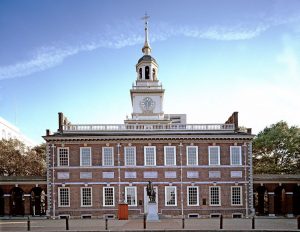
As early as 1748, the Swedish naturalist Peter Kalm (1716-79) noted during his travels that Philadelphians were preserving an aging house—identified only as “the Swanson house”—as a reminder of the city’s earlier settlers. But in the colonial and early national eras, in a region with a growing population and high demand for residential and commercial structures, sentiment seldom saved old buildings from being replaced with new ones. Memories of streetscapes and landscapes were more likely to be preserved through works of art, such as the prints of William Russell Birch (1755-1834) published in the 1790s or the illustrations in Annals of Philadelphia, by New Jersey native John Fanning Watson (1779-1860), published in various editions beginning in 1830. In Delaware, a street survey by architect Robert Mills (1781-1855), Survey of New Castle, documented that town’s seventeenth- and eighteenth-century buildings in 1805. Colonial-era structures that survived into the nineteenth century did so as a byproduct of durability or continuing use, which preserved architectural legacies such as the pattern-brick houses of southern New Jersey. Northwest of the original limits of Philadelphia, mansions remained standing as a result of the city’s purchase of country estates in the early nineteenth century to create Fairmount Park. Farther out, mansions in Germantown passed down in families for generations. Throughout the region, the most substantial homes built of stone or brick had the highest rates of survival.
The slow emergence of interest in historic preservation can be charted by the treatment of Independence Hall, originally the Pennsylvania State House (built beginning in 1732). Pennsylvanians demonstrated a lack of interest in preservation when, in 1781, they demolished the building’s original wood steeple after it became unstable. In 1813, the state also demolished the original arched piazzas and wing buildings that flanked the central structure and replaced them with rows of fireproof office buildings. Around the same time, descendants of Benjamin Franklin (1706-90) also allowed his Franklin Court home and property to be demolished and redeveloped into building lots.
Preserving the Old State House
Regard for the old State House as a physical reminder of the past changed with the passage of time, especially as the American Revolution began to fade from lived experience into historical memory. In 1816, long after the Pennsylvania capital moved west to Lancaster and then to Harrisburg, Philadelphians mobilized to purchase the old State House and its square as city property rather than see the state carry out plans to sell them off for building lots. City officials had practical as well as historical motives, given the building’s use as a polling place for local elections and the value of a healthful open square in the increasingly congested city. Still, their action marked the first documented act of historic preservation in the United States. In 1828, when the Philadelphia City Councils authorized reconstructing the State House steeple to house a new clock and bell, they insisted that the architect William Strickland (1788-1854) revise his designs to replicate the original as closely as possible. Nearby, in the 1850s the Carpenters’ Company also preserved its headquarters, Carpenters’ Hall (built 1770), the meeting place of the First Continental Congress.
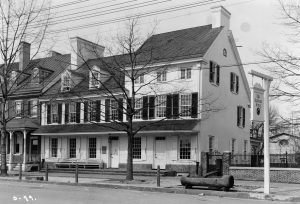
Historic preservation during the nineteenth century focused primarily on high-style buildings, especially residences associated with prominent individuals. In Philadelphia and the surrounding region, where George Washington (1732-99) slept, worked, and led armies into battle, some of these efforts drew inspiration from the 1850s campaign to save Mount Vernon, Washington’s Virginia home—a project generally regarded as the birth of the historic preservation movement in the United States. The Colonial Revival, an embrace of colonial-era aesthetics that emerged around the time of the 1876 Centennial, also inspired preservation campaigns. In the subsequent decades, in an era of when increasing immigration and industrialization seemed to undermine older social and economic orders, historical societies, patriotic organizations, and state governments took steps to safeguard sites of early American history. In Pennsylvania, for example, the state appointed a Valley Forge Park Commission in 1893, and in New Jersey, the state made the Indian King Tavern (built c. 1750) in Haddonfield its first government-owned historic site in 1903. The first preservation organization in Delaware, the Friends of Old Drawyers, formed in 1895 to save the Presbyterian church by that name (built c. 1773) in New Castle County.
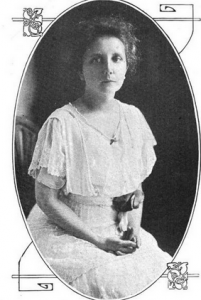
Often, leaders of preservation projects in the late nineteenth and early twentieth century could trace their own ancestry to the era of colonial settlement or the American Revolution. And like the Mount Vernon Ladies’ Association in Virginia, women often led local efforts to preserve or restore historic homes. During the second half of the nineteenth century, women organized to save the Valley Forge home that served as Washington’s headquarters during the 1777-78 encampment of the Continental Army. Ancestral societies such as the Colonial Dames of America prevented demolition and preserved historic houses such as Stenton (built 1720s), the Germantown country home of colonial leader James Logan (1674-1751). The Daughters of the American Revolution in the 1890s took the lead in renovating the second floor of Independence Hall to reestablish a colonial ambience, and in Delaware Mabel Lloyd Ridgely (1872-1962) saved her state’s old State House (built 1787-91) from demolition in 1912. Later, in the twentieth century, the Colonial Dames of New Jersey took charge of the preserving and conserving Peachfield, a Burlington County estate dating to 1674, and the 1759 “Old Schoolhouse” in Mount Holly.
Period Rooms in Museums
While some colonial houses converted into museums, the interiors of others became museum pieces as appreciation for colonial-era aesthetics led art museum curators to install period rooms stripped from actual colonial-era houses. Thus, in 1918 the interior of a room from the Philadelphia home of Mayor Samuel Powel (1738-93, home built 1765) came to be preserved in New York, at the Metropolitan Museum of Art. Interiors from other parts of the country, especially from the South, came to Delaware for the collections of Henry Francis du Pont (1880-1969), who created the Winterthur Museum showcase of American decorative arts. The museum became a point of pilgrimage for preservationists, and du Pont and his sister Louise du Point Crowninshield (1877-1958) became early leaders in organizations such as the National Trust for Historic Preservation, founded in 1949. In the same era at the Philadelphia Museum of Art, Fiske Kimball (1888-1955), the architecture and preservation authority who served as director for nearly three decades, oversaw the installation of period rooms as well as restorations of mansions in Fairmount Park.
Historic preservation gained momentum among professional architects and citizen activists during the early and middle decades of the twentieth century. New Castle, Delaware, became a destination for architects seeking to learn from the surviving colonial-era buildings of the town founded by the Dutch in 1651, where William Penn (1644-1718) first landed in America in 1682. Preservation in the riverfront town gained momentum during the 1920s and 1930s as individuals and groups purchased and restored structures including the building known as the “Dutch House” (c. 1690-1710), the Amstel House (c. 1738), and the George Read House (1797-1803).
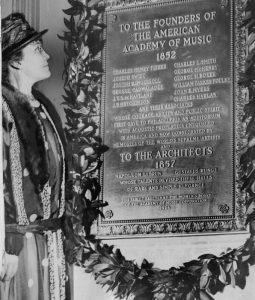
Preservation activity also responded to industrial and commercial growth, which produced a new generation of buildings overshadowing and sometimes threatening structures of earlier times. Organizations formed for the specific purpose of historic preservation, especially in the oldest sections of Philadelphia. The Philadelphia Society for the Preservation of Landmarks, founded under the leadership of Frances Wister (1874-1956) in 1931, saved the colonial-era Powel House at 244 S. Third Street from demolition. The society later extended its protection to the Hill-Physick House (built 1786) nearby on Fourth Street; Grumblethorpe (built 1744), the Wister family home in Germantown; and Waynesborough (built 1724), the birthplace of Revolutionary War General Anthony Wayne (1745-96), in Chester County. Inspired by the Landmarks Society, residents of Elfreth’s Alley took steps to preserve their little colonial-era street near the Delaware River between Arch and Race Streets, which unlike other nearby structures had been spared during construction of the Delaware River Bridge (opened in 1926, later renamed the Benjamin Franklin Bridge). Another group, An Organization for the Conservation of Historic Sites in Old Philadelphia, evolved from a committee of the Sons of the Revolution under the leadership of Judge Edwin O. Lewis (1879-1974). In 1942, Lewis and other prominent Philadelphians founded the Independence Hall Association, which successfully lobbied the state and federal governments to create expanded parks around Independence Hall (ironically spurring widespread demolition of nineteenth-century structures during the 1950s to showcase buildings associated with the nation’s founding). The authorization of Independence National Historical Park in 1948 brought a new cadre of National Park Service professionals to town, among them the nationally known preservation architect Charles E. Peterson (1906-2004), who took an active role in revitalizing the Center City neighborhood that became known as Society Hill.
Post-World War II Preservation
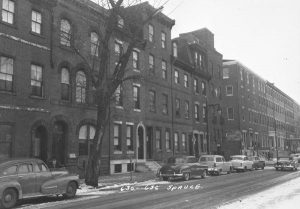
New fuel for the historic preservation movement arrived after World War II as urban renewal and the construction of interstate highways led to widespread demolition of aging urban neighborhoods in the Philadelphia region and elsewhere. In reaction, interest in preservation expanded beyond colonial-era buildings associated with famous people to encompass a wider range of time periods and building types. Philadelphia became one of the first cities in the nation to establish a Historical Commission, created by ordinance in 1955 and given the power to certify properties as historic, thereby adding protections against alterations or demolition. In Society Hill, Philadelphia departed from urban renewal through wholesale demolition and pioneered an approach of selectively preserving and restoring colonial-era buildings. The neighborhood, which had deteriorated into slum conditions by the middle of the twentieth century, transformed into a showcase, although gentrified by homeowners who were younger, wealthier, and more likely to be white than earlier occupants. In Germantown, a citizens group called Colonial Germantown Inc. (formed in 1956) adopted a similar strategy of combining historic preservation with development.
Elsewhere in Philadelphia and in other cities in the region, widespread demolition remained the rule. Proposals for new highways spurred movements to preserve communities that risked being displaced. Residents of the South Street corridor in Philadelphia successfully mobilized against a planned Crosstown Expressway during the 1960s, but Chinatown lost its battle against the Vine Street Expressway in the 1970s. The construction of I-95 during the 1960s and 1970s separated most of Philadelphia from its historic waterfront and wiped out late nineteenth-century neighborhoods in Wilmington, Delaware, where most traces of eighteenth-century life had already been erased by urban renewal. The Delaware Historical Society saved some of Wilmington’s early buildings by moving them, forming the Willingtown Square collection of eighteenth-century buildings in 1976.
In the face of continuing threats to historic resources, federal law during the 1960s and 1970s opened a new era in preservation, with significant impact in Philadelphia and the surrounding region. The National Historic Preservation Act of 1966 established a National Register of Historic Places, which necessitated state-level review of nominations. Pennsylvania, New Jersey, and Delaware all established historic preservation offices to review proposals for the Register and offer technical assistance. In addition to individual buildings, historic districts and sites likely to hold archaeological resources could be nominated for the National Register. Properties at least fifty years old could be listed, setting a new threshold for defining sites as “historic” to encompass not only the distant past but also parts of the twentieth century. The law’s Section 106 also called for assessing impacts on historic resources prior to federally funded projects, a requirement that spurred creation of local consulting firms employing preservation architects, historians, and archaeologists. Their work produced new knowledge and documentation for sites such as the First African Baptist Church Burial Ground at Eighth and Vine Streets in Philadelphia, excavated during the 1980s and 1990s in connection with projects adjacent to the Vine Street Expressway.
Tax Incentives for Preservation
Further impact in the region followed the Tax Reform Act of 1976, which created the Federal Historic Preservation Tax Incentives Program. Federal tax credits proved to be enticing to developers and transformational in local neighborhoods like Old City in Philadelphia, where developers rehabilitated and adapted former factories, warehouses, and office buildings. The new purposes for these structures, many from the late nineteenth and early twentieth centuries, ranged from affordable housing for seniors to high-end apartment buildings that developers later converted to condominiums. Following the federal government’s lead, Pennsylvania and Delaware enacted state-level tax credits for preservation.
With designations for the National Register of Historic Places largely honorary, legal protections for historic buildings required additional support and regulation at the state and local level. In the region around Philadelphia, New Jersey went farthest in creating an infrastructure for historic preservation, establishing the New Jersey Historic Trust (1967), a Historic Sites Council (1967), and a New Jersey Register of Historic Places (1970). In 1971, Haddonfield became the first municipality in the state to adopt a historic preservation ordinance, and many others followed after 1986, when an amendment to the New Jersey Municipal Land Use Law included provisions encouraging local historic preservation ordinances. Despite preservation successes in many communities, however, destruction of notable New Jersey buildings occurred in the service of redevelopment and with support of state government agencies. For example, the state overruled a 2007 decision by the Historic Sites Council to prevent demolition of the 1927 Sears Roebuck building in Camden, setting the stage for a five-year court battle by local activists that ultimately failed. Demolition followed, clearing the site to become a corporate campus for Campbell’s Soup and Subaru International. In 2017, the New Jersey Department of Transportation bulldozed the Hugg-Harrison-Glover House (built 1764) in Bellmawr in the midst of a vigorous preservation campaign by the Camden County Historical Society.
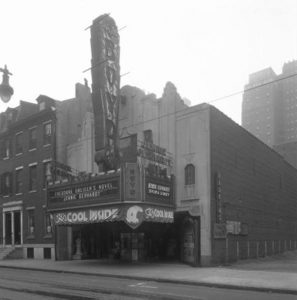
In Pennsylvania, relatively few municipalities established local governance over historic preservation through two available programs, the state-level Act 167 for certifying local historic districts and the zoning provisions of the Municipalities Planning Code. Momentum for historic preservation depended heavily on activism by nongovernmental organizations such as the Philadelphia Historic Preservation Corporation (founded 1979) and Preservation Coalition of Greater Philadelphia (founded 1982), which merged in 1996 to form the Preservation Alliance for Greater Philadelphia. Even in Philadelphia, with an established Historical Commission, failures to establish local certification for structures on the National Register left historic properties at risk, as illustrated in 2016-18 by plans to add a high-rise apartment building towering over nineteenth-century Jewelers Row. In 2014, Philadelphia preservationists also lost a hard-fought battle to preserve the Boyd Theater (built 1928), an Art Deco movie palace at Nineteenth and Chestnut Streets that the Historical Commission allowed to be demolished on the basis of financial hardship of the owner. By 2017, the apparent weaknesses in Philadelphia’s historic preservation policies prompted Mayor Jim Kenney (b. 1958) to appoint a task force to recommend improvements.
By the twenty-first century, advocates for historic preservation emphasized not only aesthetics and historic values but also economic benefits, such as the role of preservation in supporting the heritage tourism industry. Preservation advocates stressed both the cost savings and the environmental benefits of rehabilitating structures over scrapping them to build anew. The pressures of development remained among the chief challenges to historic preservation, not only in cities but also in rapidly changing rural areas. Meanwhile, climate change raised new concerns as rising sea levels began to impact shore areas of New Jersey and Delaware, floods occurred more often in historic riverside communities in Pennsylvania, and high-intensity storms increased in frequency. In all three states, preservation agencies struggled to rebound from funding and staff cuts imposed during the economic recession that began in 2008. Across the region, preservation activists developed action plans for the long term, and fought battles where necessary, to assure a future for the material remains of the past.
Charlene Mires is Professor of History at Rutgers-Camden and Editor-in-Chief of The Encyclopedia of Greater Philadelphia. (Author information current at time of publication.)
Copyright 2019, Rutgers University
Gallery
Backgrounders
Connecting Headlines with History
- City task force unveils new approach to preservation aimed at saving unrecognized history (PlanPhilly via WHYY, April 4, 2019)
- Historic Underground Railroad stop saved from brink of collapse (Billy Penn via WHYY, September 20, 2019)
- Time running out to save historic 'MLK House' in Camden (WHYY, January 20, 2020)
Links
- Frances Anne Wister: Philadelphia’s Patron Saint of Historic Preservation (Hidden City Philadelphia)
- Preserving Society Hill
- A Pair of Intrepid Fixer-Uppers Turn Upsala Mansion Back Into a Home (National Trust for Historic Preservation)
- Philadelphia Historical Commission
- Philadelphia Historic Preservation Task Force
- Preservation Alliance for Greater Philadelphia
- Philadelphia Architects and Buildings (Athenaeum of Philadelphia)
- Historic Preservation (Delaware Valley Regional Planning Commission)
- Heritage Conservancy (Bucks County)
- Chester County Historic Preservation Network
- West Chester (PA) Comprehensive Historic Preservation Plan
- Chester (PA) Historic Preservation Committee
- Delaware County Historic Preservation Plan
- Pennsylvania State Historic Preservation Office
- Preservation Pennsylvania
- New Jersey State Historic Preservation Office
- New Jersey Historic Trust
- Preservation New Jersey
- Center for Historic American Building Arts (Bridgeton, NJ)
- Delaware State Historic Preservation Office
- Preservation Delaware
- Graduate Program in Historic Preservation, University of Pennsylvania
- Historic Preservation Program, Bucks County Community College
- Historic Preservation Continuing Education Program, Mid-Atlantic Regional Center for the Humanities (MARCH) at Rutgers-Camden
- Graduate Certificate in Historic Preservation, University of Delaware
- Tax Incentives for Preserving Historic Properties (National Park Service)
- National Trust for Historic Preservation
- America’s 11 Most Endangered Places (National Trust for Historic Preservation)
- Historic American Buildings Survey (Library of Congress)
